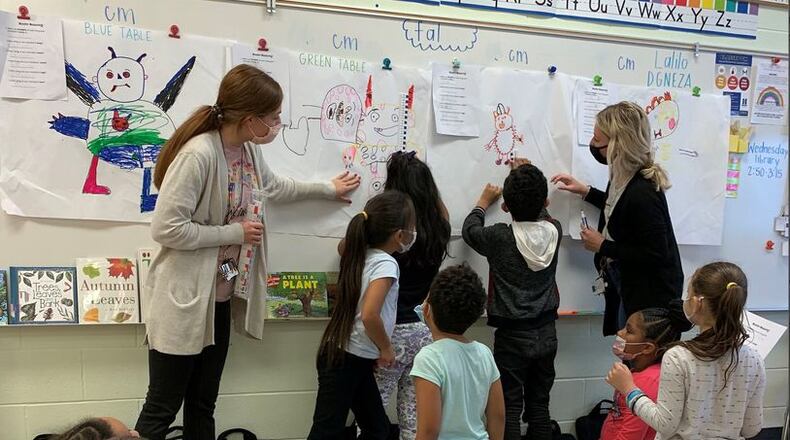And while the continuing virus threat is still a reality for thousands of local school families, some possibly deeper financial repercussions of the pandemic began to materialize in 2022 to include projected funding shortfalls as federal pandemic ESSER (Elementary and Secondary School Emergency Relief) money begins to fade.
Early on that potential wave of deficits was led by Ross and Talawanda schools, which both cited looming budget deficits and inadequate state funding as major reasons for putting school tax hikes on the ballot in 2022.
Ross saw voters reject two consecutive proposed school tax levies, while Talawanda joined Ross in losing at the polls in November.
School officials locally, statewide and across the nation say 2022 marked the first major signs of a “Covid cliff” for districts teetering on the edge of financial withdraw pains from ESSER federal aid that helped stabilize their fiduciary status through the historic crisis.
Toss in record high inflationary costs buffeting all K-12 schools and the news for many area education institutions centered on how to keep their future budgets free of deficits.
“Like our community members, we, too, are seeing the rising costs of materials, supplies, goods, salaries, and benefits found in this difficult time of inflation and possible recession,” Talawanda Superintendent Ed Theroux said recently.
“We are in deficit spending like many of our surrounding neighbors,” said Theroux, who joined Ross officials and others locally in upping their criticisms of the degree in which Ohio school funding law is dependent on local property taxes to pay for a community schools.
“The over-reliance on property tax is unconstitutional,” he said of Ohio’s school funding formula, which was changed in 2021 but left Talawanda, Ross and many other districts statewide facing reduced state aid.
And for some other area districts there were also rarely seen challenges.
Lakota Schools, which is the largest district in Butler County and the biggest suburban school system in southwest Ohio, saw its superintendent Matt Miller investigated by the county sheriff’s department over allegations that were eventually found to be of non-criminal nature.
Miller, who was cleared by sheriff investigators, was then investigated by a legal firm hired by Lakota’s school board regarding the non-criminal accusations and found Miller to be “fit for duty” to continue leading the 17,200-student district.
Lakota’s governing board had its own controversies with most centered around first-year member Darbi Boddy, whose actions since joining the board saw her four board colleagues call at one point for both her censure and resignation.
Boddy refused to resign and has continued to sharply criticize district officials as fellow board members regularly voted down her motions for proposed resolutions by a 4-1 throughout 2022.
The school system also saw the board approve a facilities plan, which was the first in nearly two decades for Ohio’s eighth-largest district.
The term “swatting” entered the public’s lexicon as an increasing number of local schools experienced fake violent attack threats being called in, forcing local SWAT teams to race to school campuses.
And more elaborate active shooter drills were conducted this year with Middletown Schools leading the way by holding one of Butler County’s largest in recent years during its summer break.
The 9,000-student Hamilton Schools took a novel approach in using its ESSER funds to pay for using two teachers in many of its elementary grade classrooms as a means to better close student learning gaps caused by pandemic closings in 2020 and subsequent disruptions in the 2020-2021 and 2021-2022 school years.
And the 10,000-student Fairfield Schools saw its “homegrown” superintendent Billy Smith become the dean of the county’s district leaders with the retirement announcement of previous veteran district administrator Russ Fussnecker of Edgewood Schools.
Butler County’s largest employer, the 20,000-student Miami University, also saw a greater return to pre-pandemic operations in 2022 and major facility additions to its main Oxford campus and new partnerships including a first with Miami Middletown regional and Cincinnati State.
The partnership was the latest in a growing number of private sector relationships formed this year at its primary campus in Oxford as well as its other regional school in Hamilton.
“Miami continued to advance our mission of academic excellence in the post-pandemic world. 2022 was a record-setting year for the university, and we look forward to all of the great things 2023 will bring,” said Ashlea Jones, interim senior director of news and communications.
About the Author

